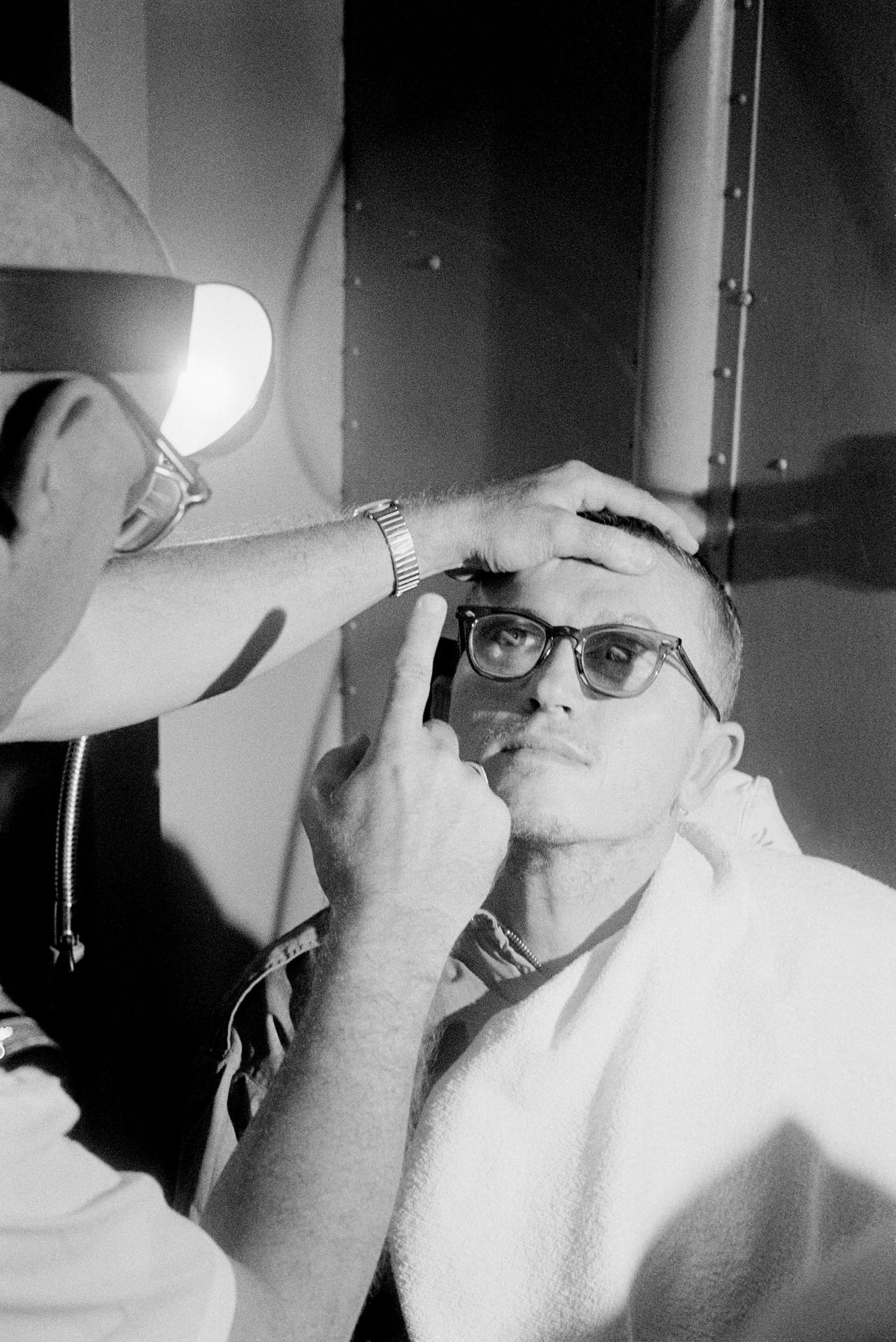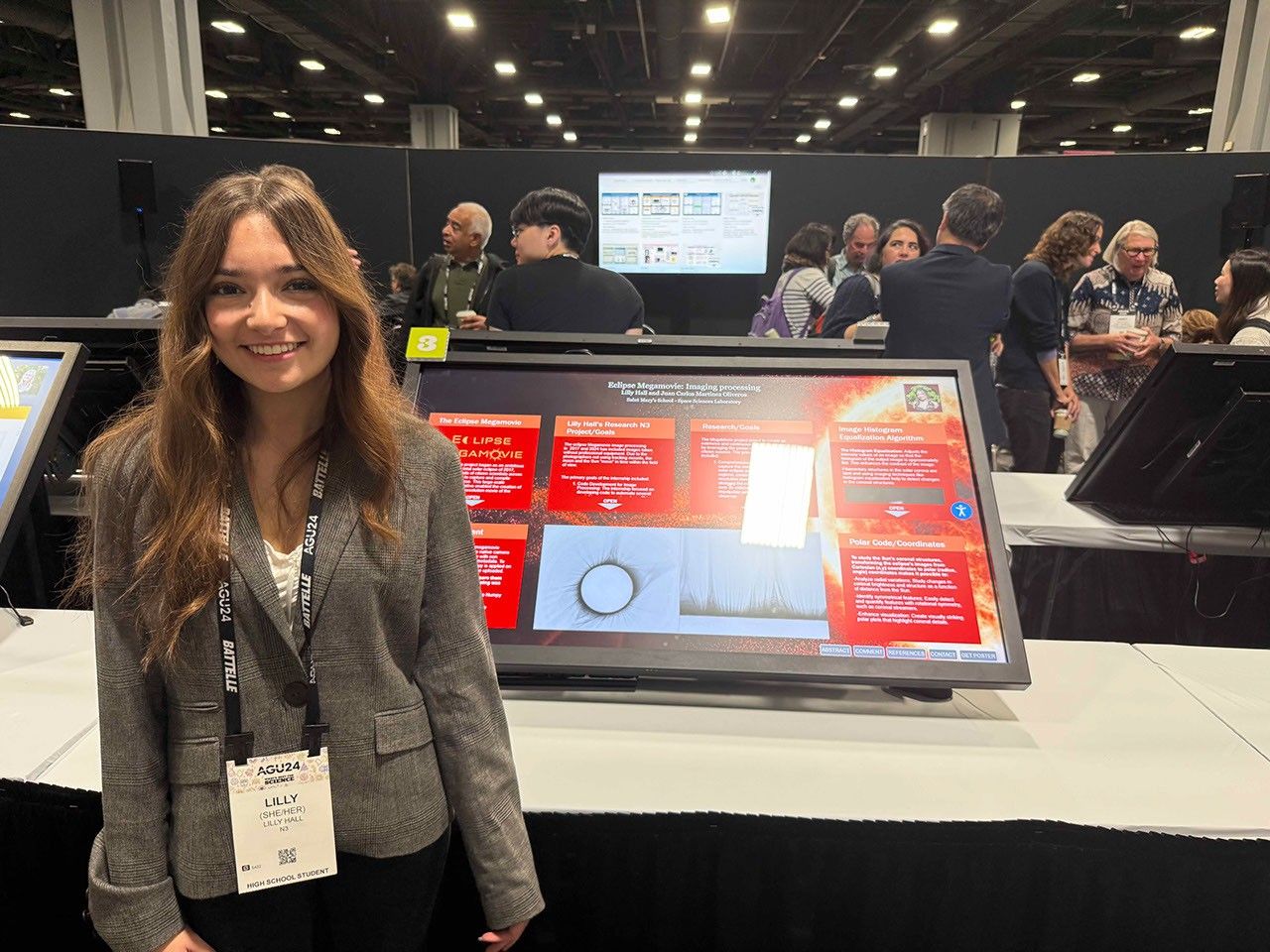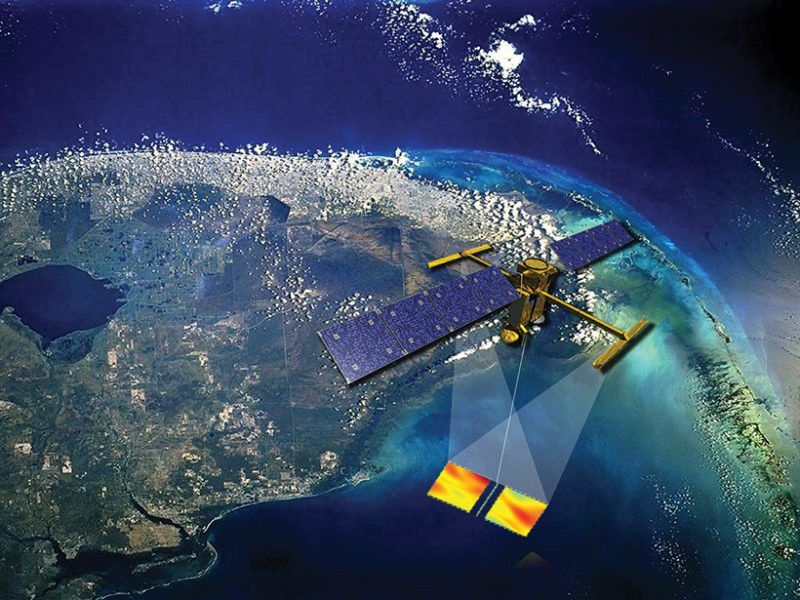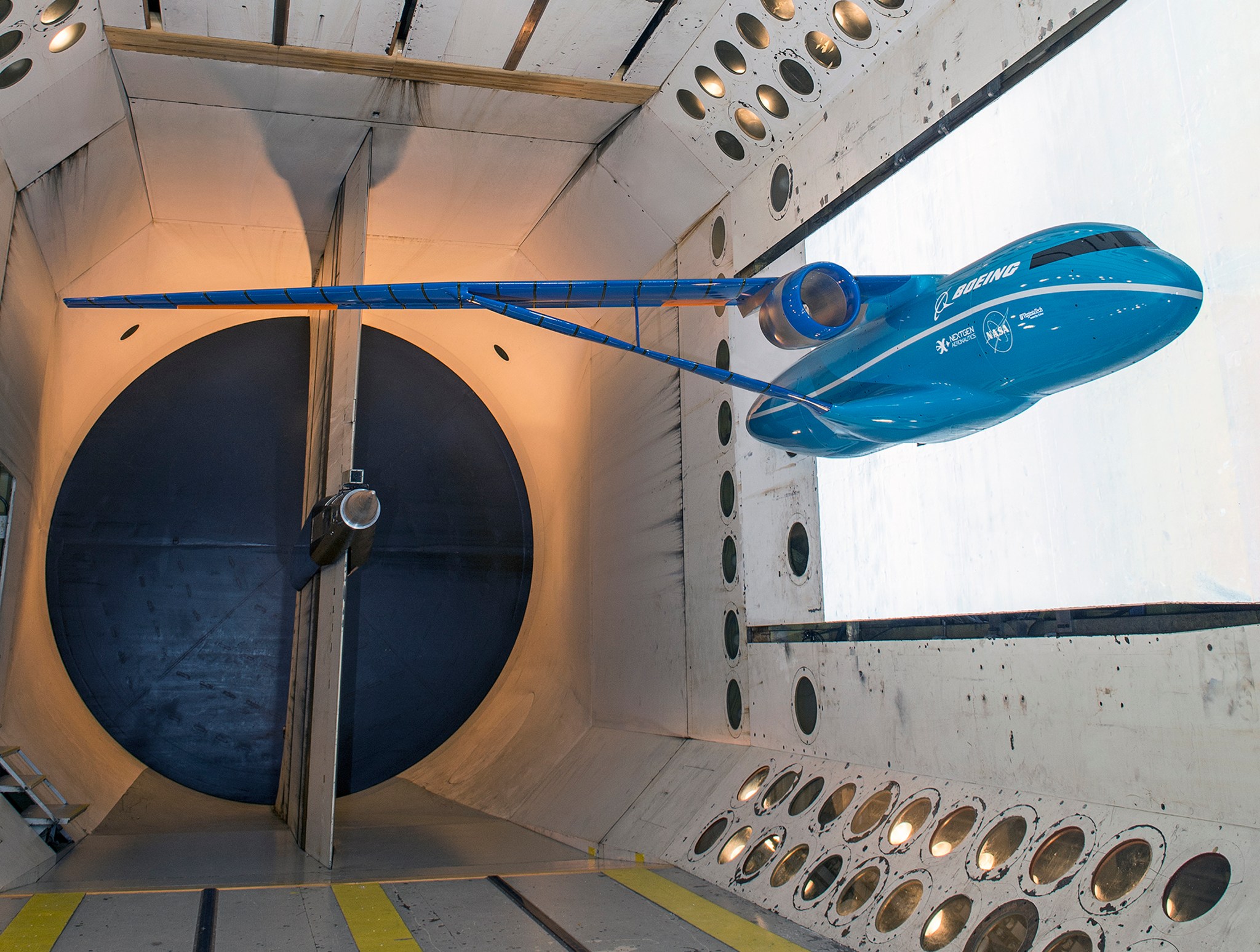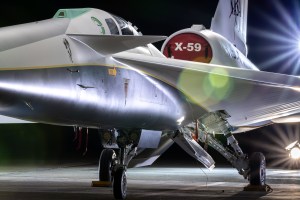Engineers at NASA’s Langley Research Center in Hampton, Va., recently installed this 15-percent scale model based on a possible future aircraft design by the Boeing Company in its Transonic Dynamics Tunnel. The 13-foot model is “semi-span,” meaning it looks like a plane cut in half. It is being used to assess the aeroelastic qualities of the unusual truss-braced wing configuration. (“Aeroelastic,” or “aeroelasticity,” is the study of how an aircraft flexes during flight in response to aerodynamic forces. The “truss” is the diagonal piece attached to the belly of the fuselage and the underside of the wing.)
Boeing designed the concept as part of SUGAR (Subsonic Ultra-Green Aircraft Research) to help conceive of airplane technologies and designs needed 20 years from now to meet projected fuel efficiency and other “green” aviation requirements. According to Boeing engineers the wind tunnel tests will help validate the analysis done during the SUGAR study, which predicts that the truss-braced wing would improve fuel consumption by 5 to 10 percent over advanced conventional wings. Boeing’s SUGAR work, as well as that of other teams studying advanced future aircraft concepts, is funded through NASA’s Fundamental Aeronautics Program’s Fixed Wing Project.
Read More about SUGAR and Other Future Aircraft





